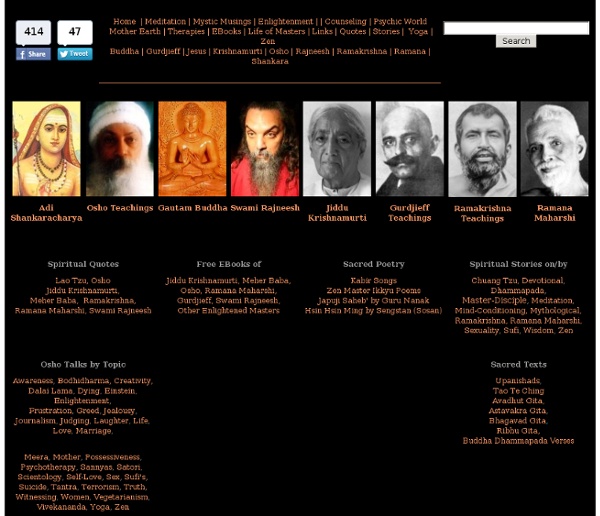Buddha Teachings Discourses of Buddha, Ramana, Ramakrishna, Shankara, Lao Tzu Gurdjieff
Integrative Spirituality :: The New Unified Understanding of Life, Spirit & Success
Spirituality and Nature
I think you came here with some expectation, bur essentially I've nothing to offer you. Simply, I'll try to share some of my own experiences and my views. You see, taking care of the planet is nothing special, nothing sacred, and nothing holy. It is something like taking care of our own house. We have no other planet or house except this one. We human beings, what is wrong with us? From a certain viewpoint, religion is a little bit of a luxury. If we practice religion properly, or genuinely, or religion is not something outside but in our hearts. If we look closely at human nature affection is the key to a good heart.
Internet Sacred Text Archive Home
Related:
Related:




Message from masters is a site which discusses about the famous people who taught philosphy like buddha,jk,osho by anupampedarla Mar 6